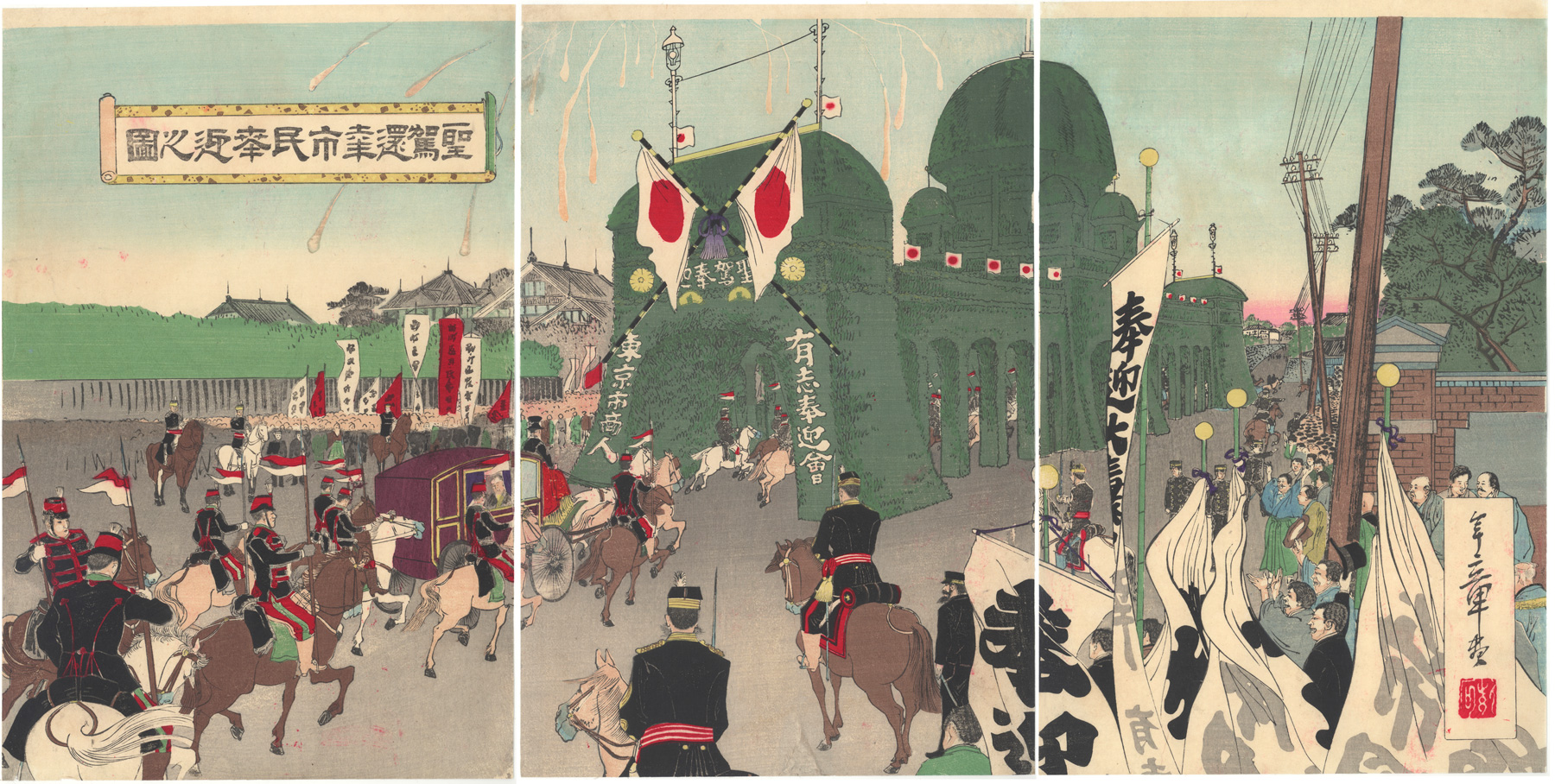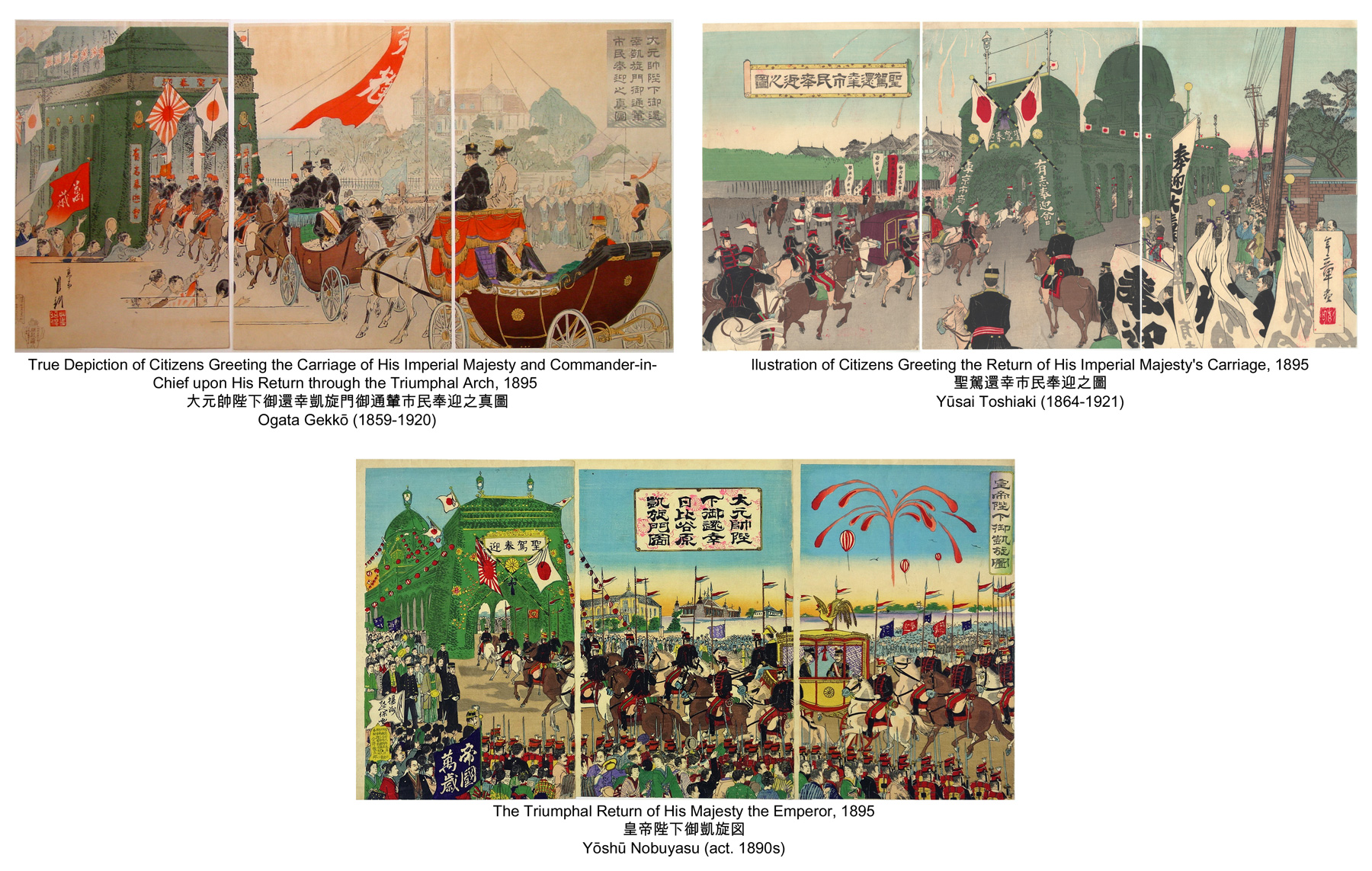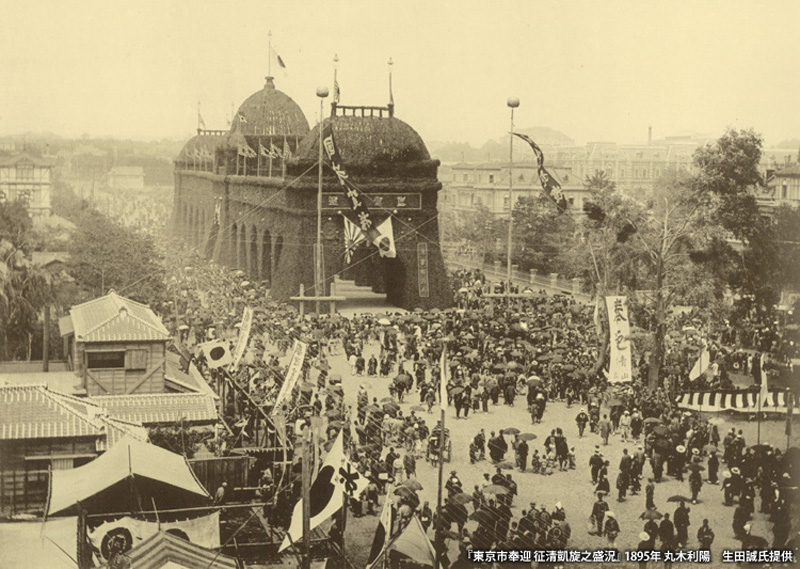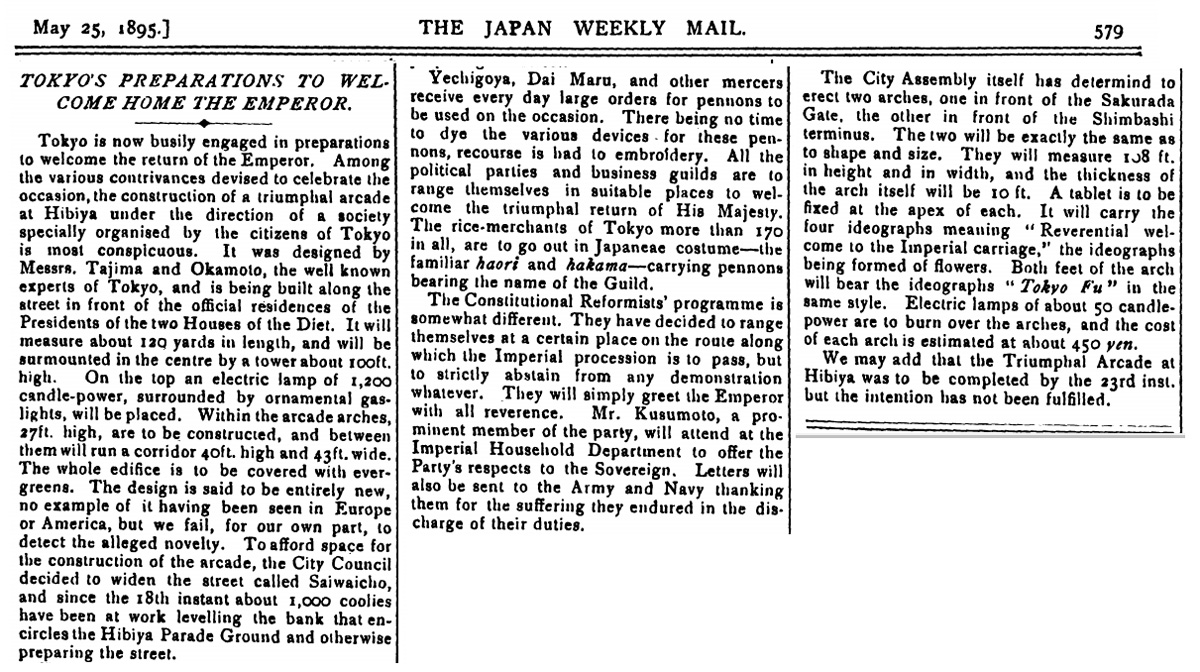About This Print
There are several other prints (see IHL Cat. #192 and below) that also depict this scene of Emperor Meiji's procession through the Hibiya Triumphal Arch in Tokyo on May 30, 1895 following the end of the Sino-Japanese War in April. In this print, as in the other print in this collection, the emperor himself is not pictured.The Emperor's Return from Kyoto
According to Donald Keene1, the emperor was not in a rush to return to Tokyo from Kyoto [the location of the new Imperial Headquarters] where he had gone in April.2 "[W]hen it was announced that the imperial headquarters would move back to Tokyo on May 29, he resisted leaving, saying that some major figures in the victory over China had not yet had their triumphal return. But when the last of the heroes of the war had returned in triumph, there was no longer any excuse for remaining in Kyoto, and the emperor left for Tokyo on May 29."
The Triumphal Arcade
thousand laborers to work to widen Saiwaichō Avenue on which it was constructed. The Tokyo City Assembly also built two other great triumphal arches, one each at Shinbashi and Sakuradamon, both of which were thirty-three meters high and over three meters thick."3
"He arrived at Shinbashi Station on the thirtieth, in military dress as usual, and paraded through a garishly decorated city that was packed with huge throngs of people. Tokyo’s citizens put out national flags and decorative lanterns in front of their houses and filled the streets with banners, streamers, and arches of many kinds. The most striking temporary monument for the city was a huge “triumphal arcade,” widely touted as having no equal in any country, which was constructed at Hibiya between the official residences of the presidents of the two Diet houses. So large was this arcade - 110 meters long and 18 meters in height, with a main tower over 30 meters high and 8 meters wide – that the city government reportedly put one
On the entry to the arch were the words 東京市商人 聖駕奉迎 有志奉迎会 (Voluntary Association of Tokyo City Merchants Welcome His Majesty [the Imperial Carriage]). When the emperor arrived fireworks were set off, as we see depicted in this print, and the crowd roared its approval.
Newspaper Report on Celebrations of the Emperor's Return
1 Emperor of Japan: Meiji and His World, 1852-1912, Donald Keene, Columbia University Press, 2002, p. 508.
2 Following the signing of the peace treaty at Shimonoseki, ending the Sino-Japanese War, the emperor left for Kyoto, the new location of the imperial headquarters. The emperor was not pleased when the headquarters were moved to Tokyo within a month after his arrival.
3 Splendid Monarchy: Power and Pageantry in Modern Japan, T. Fujitani, University of California Press, 1998 p. 130.
Print Details
| IHL Catalog | #2286 |
| Title (Description) | Illustration of Citizens Greeting the Return of His Imperial Majesty's Carriage Seiga kankō shimin hōgei no zu 聖駕還幸市民奉迎之圖 |
| Artist | Yūsai Toshiaki (1864-1921) 幽斎年章 |
| Signature | 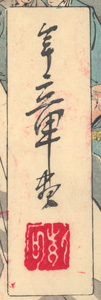 |
| Seal | unread seal (see image above) note: Museum of Fine Arts, Boston lists seal reading as "Toshiaki??" indicating uncertainty of reading. |
| Publication Date | May 1895 (Meiji 28) note: print carries no date, but the triumphal arch was erected in May 1895. |
| Publisher | no publisher marks on print |
| Impression | excellent |
| Colors | excellent |
| Condition | very good - trimmed to image; overall toning; several stains and soiling; several pin holes; not backed |
| Genre | ukiyo-e; senso-e (Sino-Japanese War) |
| Miscellaneous | |
| Format | vertical oban triptych |
| H x W Paper | right sheet: 14 3/8 x 9 5/16 in. (36.5 x 23.7 cm) center sheet: 14 3/8 x 9 1/2 in. (36.5 x 24.1 cm) left sheet: 14 3/8 x 9 7/16 in. (36.5 x 24 cm) |
| H x W Image | right sheet: 14 x 9 5/16 in. (35.6 x 23.7 cm) center sheet: 14 1/16 x 9 1/2 in. (35.7 x 24.1 cm) left sheet: 14 1/16 x 9 7/16 in. (35.7 x 24 cm) |
| Literature | |
| Collections This Print | Museum of Fine Arts, Boston 2000.534a-c |
latest revision:
4/28/2020


